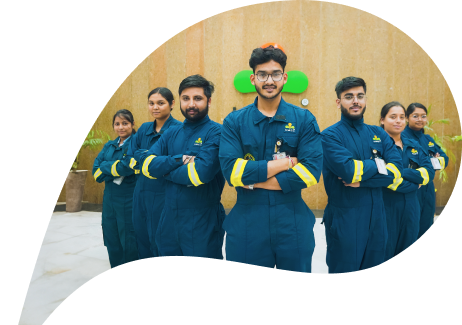Polymers and the Indian Festive Season: A Close Connection
Have you ever stopped to think about how different our lives would be without some everyday things we hardly notice? Imagine starting your day without a toothbrush or a shampoo bottle. Things like toothbrushes, bottles, syringes, packaging material, and even the seats, dashboards, and tyres in our cars owe their ease to something special called polymers. Now, as the festive season approaches, our homes buzz with excitement. Amidst all these colourful and cheery celebrations, there is one product working behind the scenes, adding a touch of magic to our festivities. Some of the most widely used polymers include – polypropylene and polyethylene. Polymers are wonder material that are an integral part of various aspects of our lives, enhancing both convenience and safety. They are lightweight, durable, flexible, and safe material is used in various end-user industries, including healthcare, food and beverages, and personal care.
Polymers make festivities more cheery, bright, colourful, and safer
Polymers play an important role in various aspects of Indian festivities and contribute to growth and happiness through their diverse applications. Let us see how.
Decorations: These are used to create decorative items such as plastic garlands, streamers, rangoli stencils, decorative pots, containers for storing festive sweets and snacks,
LED decorative lights: Polymers are part of these lights, without which no celebration is complete.
Packaging and Wrapping: Versatile and cost-effective, polymer-based materials are popular for gift packaging, offering a range of designs and colours.
Clothing and Accessories: Synthetic fibres, a type of polymer, have revolutionized festive clothing, providing options in design, comfort, and affordability. These are also used for making bottles and bags.
Safety and Convenience: Festivals often involve a lot of movement and gatherings. Polymers contribute to safety through their use in crowd control barriers, barricades, and temporary structures. Additionally, polymer-based disposable cutlery and food containers add convenience during large gatherings.
So, what are polymers, especially Polypropylene?
Technically speaking, Polymers are large molecules made up of repeating smaller units called monomers. They are the basic elements of various things we use on a daily basis, as we discussed in this blog earlier. Polypropylene, in particular, is a type of polymer known for its versatility and durability. Polypropylene, a thermoplastic polymer, softens upon heating and can be remolded. This non-toxic component doesn’t leach harmful chemicals into food or liquids stored in containers made from it. It is also resistant to moisture, chemicals, and environmental factors, contributing to its safety in various contexts. Polypropylene is widely used in multiple industries, including the packaging industry, healthcare, automotive, furniture and appliances, the construction industry, and more.
Current Market Scenario
According to a report by IndustryARC, the Indian polypropylene market is set to reach US$14.8 billion by 2027 after growing at a CAGR of 9.7% during the forecast period 2022-2027. The primary growth drivers for the Polypropylene market in India include its growing demand in end-user industries such as automotive, electrical and electronics, construction and building, food and beverages, and healthcare.
HMEL – A leading manufacturer of Polypropylene
HMEL is a frontrunner in the oil and gas industry in India. When it comes to manufacturing polypropylene, HMEL has a huge capacity to cater to the ever-growing local demand for Polypropylene (PP). Now, it is expanding its capacity by undertaking a massive ~US$ 3 Billion expansion in petrochemicals. It is working towards reducing the nation’s dependence on imports, which will help in immediate availability, affordability, and a push to employment.
It will add to the existing polypropylene unit fully integrated with the refinery. It will feature a world-class Dual Feed Cracker Unit of 1.2 Million MT/annum of Polyethylene (PE) and 0.5 Million MT/annum of Polypropylene (PP) capacity. HMEL is striving to be a remarkable name in the field of PP and PE in India, as this project will have world-class licensors and breakthrough technologies.
The Indian polypropylene market shows promise. Increasing industry demand, innovation in packaging tech, and government support for sustainability will drive growth. However, even the leading manufacturers like HMEL also need to tackle competition, material price fluctuations, and awareness gaps.
Conclusion
As festivals approach, there’s a big demand for these special materials. This is where the makers come in. Working behind the scenes, leading polymer manufacturers like HMEL create the things that make our festivals special. They are the ones who ensure that the magic of polymers reaches us all.
So, next time you see a shiny decoration or use a convenient container, remember the magic of polymers and the people who work hard to make our celebrations extra special. They’re the ones who make our daily lives easy and our festivals full of colour and cheer.






 no updates
no updates